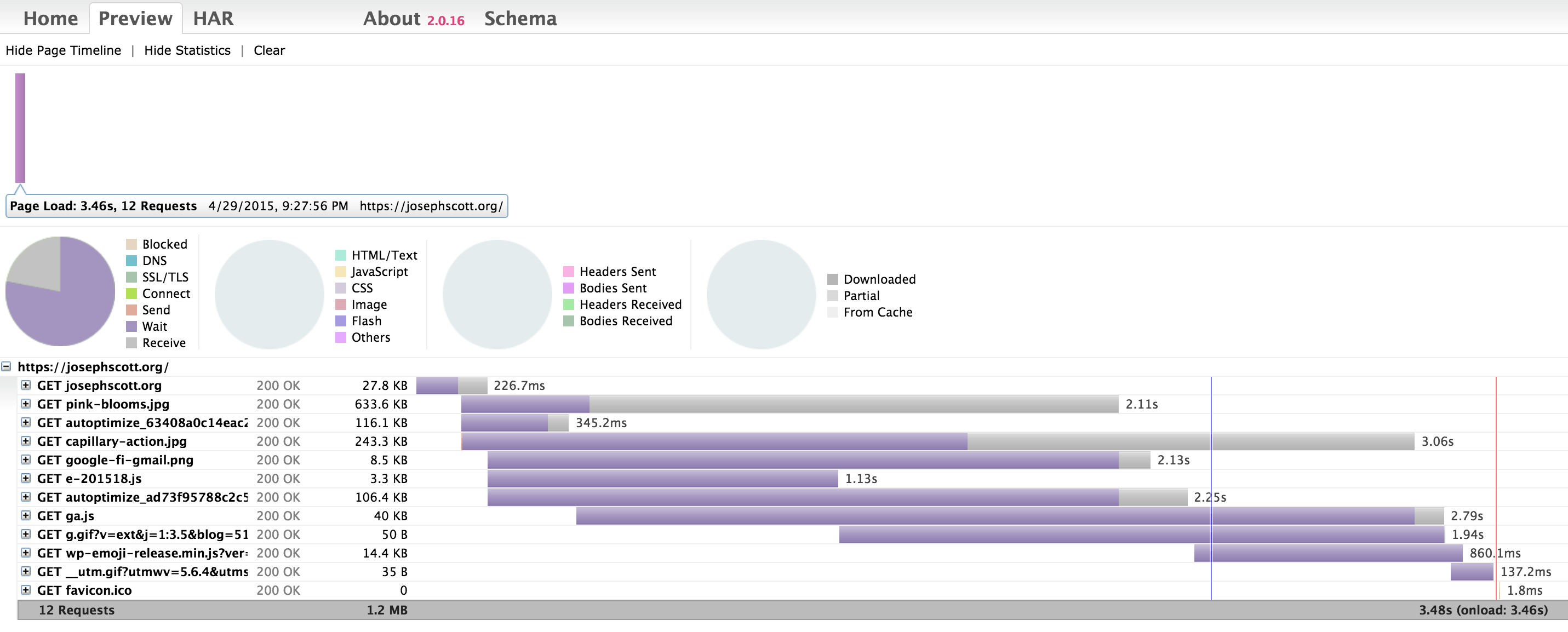

But, what if you don't control the client, or there is no easy way to force a proxy? Most mobile phones fall into this category. As long as you can configure your client app to use a proxy, such as Charles Proxy (Mac) or Fiddler (Windows), then you can export the same data.

The browser is a convenient way to capture and export HAR's, but it's also not the only way.

Try the demo version at .Īn open source performance suite in three easy steps: capture HAR with PhantomJS, analyze with YSlow for anomalies, automatically export to HAR Storage for the trends. Powered by Pylons and MongoDB under the hood, it allows us to log the measurements, compare them side by side, run aggregate analysis, and much more. Now, how about some trends or historical analysis? We can do that too, with the help of another free and open-source tool: HAR Storage. With that, you can now add an extra step to your CI build to capture the network waterfall, sanity check it for regressions, and fire the alarms accordingly.
Har viewer free download download#
If you're a PageSpeed fan, then you can also download and build the SDK, which will give you a har_to_pagespeed binary for similar analysis.
Har viewer free download full#
Alternatively, YSlow can also provide a full JSON, or XML analysis with respect to all of the built-in rules. Once we have the HAR file, we also feed it to YSlow to score the run and build a short report. $> yslow -info all -format json igvita.har $> yslow -info basic -format plain igvita.har # download, and unpack PhantomJS: $> phantomjs examples/netsniff.js > igvita.har Alternatively, if you need a quick way to visualize a local HAR file, then the har Ruby gem is indispensable: HAR viewer is a free and open-source (PHP + JavaScript) application, which you can host yourself, or use the hosted version: paste the HAR data you copied earlier, and you can view the timeline. But you can also feed the data into HAR Viewer, to get an interactive timeline directly in your browser: Great, we can export the network waterfall in HAR format, now what? Well, to start, you can save it for later analysis, or attach it to a bug report - sure beats annotating screenshots of the timeline. Note that you can also export an individual request, or simply copy the JSON data into clipboard. The only notable omission is the response body itself - by default, most tools will only store the meta-data.īut, enough theory, how do we get a HAR file? Simple, in Chrome, open the Network tab in Dev Tools, right click on the waterfall, and there you have it: Save All as HAR. In other words, the HAR file contains all the meta-data that you need to create the network waterfall. Similarly, the response object contains all the associated response data, including response timing data such as timestamps for DNS, SSL handshakes, TCP connect, and wait times, amongst others. In turn, each resource stores the start time of the request, the request method, all the headers, cookies, and payload size. Each HAR file contains a list of loaded pages, and a list of entries for each requested resource for each page - see example. HAR 101: The data formatĪ HAR file is encoded with a simple JSON format, which is both easily created and consumed. Tune in above to check them out, or (and) continue reading for some highlights. To highlight some of these applications, Peter Lubbers and myself recorded a GDL episode of nothing but awesome demos. The best part about working with HAR data is the number of free tools available to analyze it, visualize it, and even trend it overtime.


 0 kommentar(er)
0 kommentar(er)
